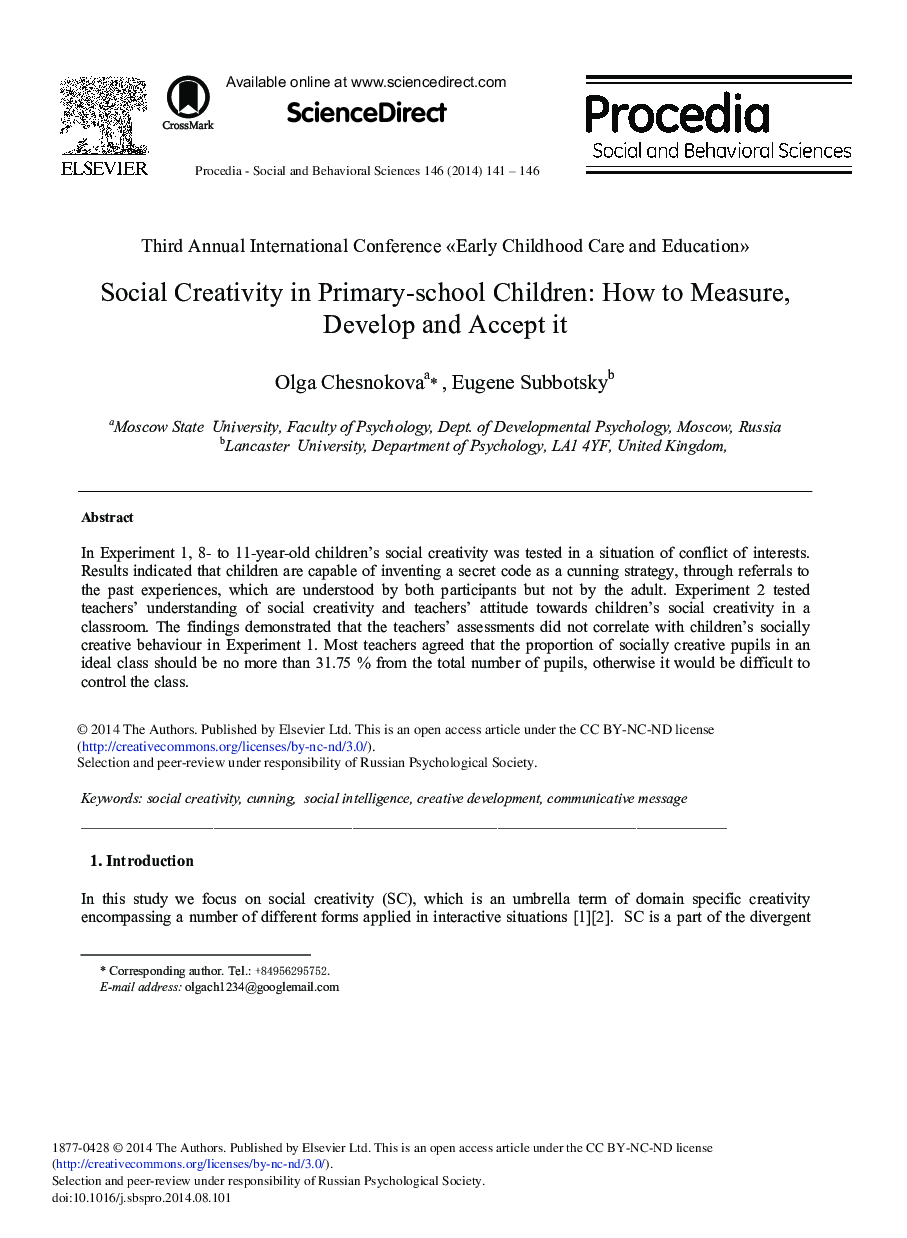| Article ID | Journal | Published Year | Pages | File Type |
|---|---|---|---|---|
| 1112671 | Procedia - Social and Behavioral Sciences | 2014 | 6 Pages |
In Experiment 1, 8- to 11-year-old children's social creativity was tested in a situation of conflict of interests. Results indicated that children are capable of inventing a secret code as a cunning strategy, through referrals to the past experiences, which are understood by both participants but not by the adult. Experiment 2 tested teachers’ understanding of social creativity and teachers’ attitude towards children's social creativity in a classroom. The findings demonstrated that the teachers’ assessments did not correlate with children's socially creative behaviour in Experiment 1. Most teachers agreed that the proportion of socially creative pupils in an ideal class should be no more than 31.75% from the total number of pupils, otherwise it would be difficult to control the class.
